

Research Blog
How to write a research paper introduction (with examples).

I hope you enjoy reading this blog post.
If you would like to learn more about research, check out this Research Course .
Welcome to our comprehensive guide on crafting the perfect introduction for your research paper. In this blog, we’ll explore the crucial elements of a strong introduction, highlight common pitfalls to avoid, and provide practical tips to effectively set the stage for your study’s objectives and significance.
Table of Contents
Lack of a clear thesis statement, lack of clear objectives and scope, failure to establish the research significance, insufficient background information, inadequate literature review, ignoring the research gap, overly technical language, poor organization and flow, neglecting the audience, the importance of a good introduction.
A strong introduction sets the tone for the entire paper, guiding the reader through the research journey. It provides context, establishes relevance, and ensures the reader understands the importance of the study.
Starting a research project is exciting, but getting the introduction right is key. It’s like opening the door to your study and inviting readers in. However, there are some common missteps that can trip you up along the way.
Find the U.S. Research Position of your dreams!
Common mistakes to avoid.
A thesis statement is the central argument or claim that guides the entire research paper. It is a concise summary of the main point or claim of the paper and is typically found at the end of the introduction. A clear thesis statement helps to focus the research, provide direction, and inform the reader of the paper’s purpose. Expert reviewers may even skip the rest of the introduction (as they are well versed in the topic) and focus only on your thesis statement, so it’s vital to make sure it is perfect!
When a research introduction lacks a clear thesis statement, several issues can arise:
- Ambiguity : Without a clear thesis, the reader may be confused about the paper’s purpose and the main argument. Do not talk in vague terms. Whenever possible, use terminology established in recent literature. Narrow down the key aspects of the association that you are investigating (the study sample, the outcome and predictor measures) as much as possible.
- Lack of Focus : The paper can become unfocused and meander through unrelated topics, making it difficult for the reader to follow the argument. Do not try to have more than 1-2 main aims in a paper. Even if you have done supplementary analysis, it is better to say so in the discussion. As a rule of thumb, try to answer one major question only!
- Weak Argumentation : A well-defined thesis provides a strong foundation for building arguments. Without it, the arguments may appear weak and unsupported.
Let's be more practical:
1- In this paper, I will discuss climate change.
- Problem: This statement is too broad and vague. It does not provide a clear direction or specific argument.
2- This paper argues that climate change, measured by global average temperature change, is primarily driven by human activities, such as deforestation and the burning of fossil fuels, and proposes policy measures to mitigate its impact.(1)
- Strengths: – Specificity : It clearly states that the paper will focus on human activities as the main drivers of climate change. – Argument : It presents a specific claim that the paper will argue. – Direction : It hints at the structure of the paper by mentioning policy measures.
If you would like to learn more about introductions and other aspects of clinical research, check out the Medical Research Course from the Match Guy here .
Powerful Tips:
- Be Specific : Clearly define the main argument or claim. Avoid vague or broad statements.
- Be Concise : Keep the thesis statement concise, ideally one to two sentences.
- Provide Direction : Indicate the structure of the paper by hinting at the main points that will be discussed.
- Revise as Needed : Be prepared to revise the thesis statement as your research progresses and your understanding deepens.
Transform research ideas into published papers!
A clear statement of objectives and scope is crucial in a research paper introduction because it outlines what the study aims to achieve and defines the boundaries within which the research will be conducted.
Example of Lacking Clear Objectives and Scope: This paper examines the impacts of climate change on agriculture.
- Problem : This statement is too broad and vague. It does not specify what aspects of climate change or agriculture will be studied, nor does it define the geographical or temporal scope.
Example with Clear Objectives and Scope: This study aims to investigate the effects of rising temperatures and changing precipitation patterns on crop yields in the Midwest United States from 2000 to 2010. The objectives are to (1) assess the impact of temperature changes on corn and soybean yields, (2) analyze how variations in precipitation affect crop growth, and (3) identify adaptive strategies employed by farmers in the region.(2)
Powerful tips:
- Be Specific : Clearly state what the study aims to achieve and avoid vague or broad statements.
- Identify Key Areas : Outline the main areas or aspects that the research will focus on.
- Set Boundaries : Define the geographical, temporal, and conceptual boundaries of the research.
- List Objectives : Clearly articulate specific research objectives or questions that the study will address.
- Stay Realistic : Ensure that the objectives and scope are achievable within the constraints of the research project.
- Make it flow : Make sure you are not repeating the same concepts as the thesis statement, as these two sections are often presented back-to-back in the final paragraph of the introduction! Remember: the thesis statement is your hypothesis or question, and your objectives are ‘how’ you are going to test your thesis.
Master medical statistics and boost your productivity!
This mistake can result in the research appearing trivial or irrelevant, diminishing its potential impact. When the significance of the research is not well-established, readers may struggle to understand the value of the study and why they should care about it.
Example of Failure to Establish Research Significance: This study investigates the effects of social media usage on sleep patterns among teenagers.
- Problem : The significance of studying social media’s impact on sleep patterns is not explained. The reader may wonder why this research is important or what implications it has.
Example with Established Research Significance: This study investigates the effects of social media usage on sleep patterns among teenagers. Understanding this relationship is crucial because insufficient sleep is linked to numerous health issues, including decreased academic performance, heightened stress levels, and increased risk of mental health problems. With the pervasive use of social media among adolescents, identifying how it impacts sleep can inform strategies for promoting healthier habits and improving overall well-being in this vulnerable age group.(3)
- Link to Broader Issues : Connect the research topic to broader issues or trends that highlight its relevance and importance.
- Explain Practical Implications : Discuss the potential practical applications or benefits of the research findings.
- Address Gaps in Knowledge : Identify gaps in the existing literature that the research aims to fill.
- Highlight Potential Impact : Emphasize the potential impact of the research on the field, society, or specific populations.
- Use Concrete Examples : Provide concrete examples or scenarios to illustrate the significance of the research.
Feeling swamped by the complexities of Systematic Reviews?
Insufficient background information in the introduction of a research paper refers to failing to provide enough context for the reader to understand the research problem and its significance. Background information sets the stage for the research by offering necessary details about the topic, relevant theories, previous studies, and key terms.
This may lead to:
- Reader Confusion : Without adequate context, readers may struggle to understand the research question, its importance, and how it fits into the broader field of study.
- Weak Justification : Insufficient background can undermine the rationale for the research, making it difficult to justify why the study is necessary or valuable.
- Misinterpretation : Lack of context can lead to misinterpretation of the research objectives, methods, and findings.
Example of Insufficient Background Information: In recent years, many researchers have studied the effects of social media on teenagers. This paper explores the relationship between social media use and anxiety among teenagers.
- Problem : This introduction lacks specific details about the previous research, the theoretical framework, and key terms. It does not provide enough context for the reader to understand why the study is important.
Example of Adequate Background Information: Social media platforms have become an integral part of teenagers’ daily lives, with studies showing that 95% of teens have access to a smartphone and 45% are online almost constantly. Previous research has linked excessive social media use to various mental health issues, including anxiety and depression. However, the mechanisms underlying this relationship remain unclear. This paper explores the impact of social media use on anxiety levels among teenagers, focusing on the roles of social comparison and cyberbullying.(4)
If you would like to learn more about manuscript writing, check out the Comprehensive Research Course from the Match Guy here .
- Review Relevant Literature : Summarize key studies and theories related to your topic.
- Provide Context : Explain the broader context of your research problem.
- Define Key Terms : Ensure that any specialized terms or concepts are clearly defined.
- Identify the Research Gap : Highlight what is not yet known or understood about your topic.
- Be Concise : Provide enough information to set the stage without overwhelming the reader with details.
Getting No Replies from Institutions? Don't Stress!
This mistake can occur when the literature review is too brief, lacks depth, omits key studies, or fails to critically analyze previous work. An inadequate literature review can undermine the foundation of the research by failing to provide the necessary context and justification for the study.
Inadequate Literature Review: There has been some research on the relationship between exercise and mental health. This paper will investigate this relationship further.
- Problem : This review is too general and does not provide sufficient detail about the existing research or how it informs the current study.
Example with Adequate Literature Review: Research has consistently shown that regular physical activity has positive effects on mental health. For example, a study by Gujral et al. (2019) demonstrated that aerobic exercise can significantly reduce symptoms of depression and anxiety. Similarly, Smith and Lee (2020) found that strength training also contributes to improved mood and reduced stress levels. However, much of the existing research has focused on adult populations, with relatively few studies examining these effects in adolescents. Additionally, the specific types of exercise that are most beneficial for different mental health outcomes have not been thoroughly investigated. This study aims to explore the effects of various types of exercise on the mental health of high school students, thereby addressing these gaps in the literature.(5-6)
- Be Comprehensive : Review a broad range of studies related to the research topic to provide a thorough context.
- Be Specific : Cite specific studies, including their methodologies, findings, and relevance to the current research.
- Be Critical : Analyze and evaluate the existing research, identifying strengths, weaknesses, and gaps.
- Be Structured : Organize the literature review logically, grouping studies by themes or findings to create a coherent narrative.
- Be Relevant : Focus on the most relevant studies that directly relate to the research question and objectives.
Unlock your research potential with our dynamic course designed for medical students! Built by an experienced researcher with 150+ publications and 3000+ citations!
Ignoring the research gap in a research paper introduction means failing to identify and articulate what specific aspect of the topic has not been explored or adequately addressed in existing literature. The research gap is a critical component because it justifies the necessity and originality of the study. Without highlighting this gap, the research may appear redundant or lacking in significance.
How huge is this mistake?
- Lack of Justification : The study may not appear necessary or relevant, diminishing its perceived value.
- Redundancy : The research may seem to duplicate existing studies, offering no new insights or contributions to the field. Even if you are using methodology similar to previous studies, it is important to note why you are doing so e.g., few studies have used that specific methodology, and you would like to validate it in your sample population!
- Reader Disinterest : Readers may lose interest if they do not see the unique contribution or purpose of the research.
Example of Ignoring the Research Gap: Many studies have examined the effects of exercise on mental health. This paper looks at the relationship between physical activity and depression.
- Problem : This introduction does not specify what aspect of the relationship between physical activity and depression has not been studied, failing to highlight the unique contribution of the research.
Example of Identifying the Research Gap: Numerous studies have demonstrated the general benefits of physical activity on mental health, particularly its role in alleviating symptoms of depression. However, there is limited research on how different types of exercise (e.g., aerobic vs. anaerobic) specifically impact depression levels among various age groups. This study investigates the differential effects of aerobic and anaerobic exercise on depression in young adults, aiming to fill this gap in the literature.(6)
- Conduct a Thorough Literature Review : Understand the current state of research in your field to identify what has been studied and where gaps exist.
- Be Specific : Clearly articulate what specific aspect has not been covered in existing studies.
- Link to Your Study : Explain how your research will address this gap and contribute to the field.
- Use Evidence : Support your identification of the gap with references to previous studies.
- Emphasize Significance : Highlight why filling this gap is important for advancing knowledge or practical applications.
Do Statistical Analysis on your own with confidence in 2 weeks!
Overly technical language refers to the excessive use of jargon, complex terms, and highly specialized language that may be difficult for readers, especially those not familiar with the field, to understand. While technical language is sometimes necessary in academic writing, overusing it in the introduction can create several problems:
- Reader Alienation : Readers may find the text intimidating or inaccessible, leading to disengagement.
- Lack of Clarity : The main points and significance of the research can become obscured by complex terminology.
- Reduced Impact : The research may fail to communicate its importance effectively if readers struggle to understand the introduction.
Example of Overly Technical Language: The present study examines the metacognitive strategies employed by individuals in the domain of second language acquisition, specifically focusing on the interaction between declarative and procedural memory systems in the process of syntactic parsing.
- Problem : This sentence is loaded with jargon (“metacognitive strategies,” “second language acquisition,” “declarative and procedural memory systems,” “syntactic parsing”), which can be overwhelming and confusing for readers not familiar with these terms.
Example with Simplified Language: This study looks at the thinking strategies people use when learning a second language. It focuses on how different types of memory, such as the knowledge of facts and the skills for doing things, help in understanding sentence structures.(7)
- Know Your Audience : Tailor the language to the intended audience, ensuring it is accessible to both specialists and non-specialists.
- Define Term s: When technical terms are necessary, provide clear definitions or explanations.
- Use Analogies : Simplify complex concepts using analogies or examples that are easy to understand.
- Avoid Jargon : Limit the use of jargon and specialized terms, especially in the introduction.
- Seek Feedback : Ask peers or non-experts to read the introduction and provide feedback on clarity and accessibility.
Curious about delving into research but unsure where to begin?
Poor organization and flow in a research paper introduction refer to a lack of logical structure and coherence that makes the introduction difficult to follow. This can occur when ideas are presented in a haphazard manner, transitions between sections are weak or non-existent, and the overall narrative is disjointed. A well-organized introduction should smoothly guide the reader from the general context to the specific objectives of the study.
Example of Poor Organization and Flow: “Climate change affects agriculture in various ways. Many studies have looked at the impact on crop yields. This paper will discuss the economic implications of these changes. Climate models predict increased variability in weather patterns, which will affect water availability. Researchers have found that higher temperatures reduce the growing season for many crops.”
- Problem : The ideas are presented in a scattered manner without clear connections. The mention of economic implications seems out of place, and there are abrupt shifts between topics.
Example with Good Organization and Flow: Climate change poses significant challenges to agriculture by altering weather patterns, impacting crop yields, and affecting water availability. Numerous studies have shown that increased temperatures can shorten the growing season for many crops, leading to reduced yields. Additionally, climate models predict increased variability in weather patterns, which complicates water management for farmers. These changes not only affect food production but also have substantial economic implications for agricultural communities. This paper will examine the economic impacts of climate-induced changes in agriculture, focusing on crop yield variability and water resource management.(1)
- Create an Outline : Before writing, outline the main points you want to cover in the introduction.
- Think in terms of an inverted triangle : Begin broadly to introduce basic concepts related to your topic. As you progress through the introduction, you can introduce more and more specific topics until you have enough information to justify your thesis statement
- Use Transitional Phrases : Employ transitional phrases and sentences to connect ideas and sections smoothly.
- Follow a Logical Sequence : Present information in a logical order, moving from general context to specific objectives.
- Maintain Focus : Stay focused on the main topic and avoid introducing unrelated ideas.
- Revise for Coherence : Review and revise the introduction to ensure that it flows well and that each part contributes to the overall narrative.

Advisor UNLIMITED Access
We get how stressful the residency match process is, so we're here for you - communicate with your personal advisor ANYTIME you need!

Personal Statement Editing
Our editing includes not only language but also context, structure, and content advising.

ERAS Application Editing
The editing goes beyond language and grammar corrections to structure, design, and content based on your personal story and achievement.

- Interview Preparation
The best way to learn something is to do it. That’s why we divide our interview preparation sessions into two parts. Mock Interview + Feedback
Neglecting the audience refers to failing to consider the background, knowledge level, and interests of the intended readers when writing the introduction of a research paper. This mistake can manifest in several ways, such as using overly technical language for a general audience, providing insufficient background information for readers unfamiliar with the topic, or failing to engage the readers’ interest.
Example of Neglecting the Audience: For experts in genomic sequencing, this study explores the epigenetic modifications resulting from CRISPR-Cas9 interventions, focusing on the methylation patterns and histone modifications observed in gene-edited cells.
- Problem : This introduction assumes a high level of expertise in genomic sequencing and epigenetics, which may alienate readers without this background.
Example with Audience Consideration: CRISPR-Cas9 is a groundbreaking tool in genetic research that allows scientists to edit DNA with precision. However, altering genes can lead to unexpected changes in how genes are expressed, known as epigenetic modifications. This study investigates these changes by looking at specific markers on DNA, such as methylation patterns, and how they affect gene activity in cells that have been edited using CRISPR-Cas9. Our goal is to understand the broader implications of gene editing on cellular functions, which is crucial for advancing medical research and treatments.(8)
- Identify the Audience : Determine who the intended readers are (e.g., experts, students, general public) and tailor the language and content accordingly. Read papers from the journals you are considering for submission. Professional editors curate the language used in these papers and are a great starting point to identify the level of expertise of your audience!
- Simplify Language : Use clear and straightforward language, avoiding jargon and technical terms unless they are necessary and well-explained.
- Provide Background Information : Include sufficient background information to help readers understand the context and significance of the research.
- Engage the Reader : Start with an engaging introduction that highlights the relevance and importance of the research topic.
- Anticipate Questions : Consider what questions or concerns the audience might have and address them in the introduction
USMLE Tutoring
By following these guidelines and avoiding common pitfalls, you can create an introduction that not only grabs the attention of your readers but also sets the stage for a compelling and impactful research paper.
Final Tips:
- Revise and refine your introduction multiple times to ensure clarity and coherence.
- Seek feedback from peers, mentors, or advisors to identify areas for improvement.
- Keep your audience in mind and tailor your language and content to their needs and interests.
- Stay focused on your research objectives and ensure that every part of your introduction contributes to achieving them.
- Be confident in the significance of your research and its potential impact on your field or community.
Let your introduction be more than just words on a page. It’s a doorway to understanding. To help you along, we’ve created a practical course on writing and publishing research projects. It’s 100% risk-free, with a money-back guarantee if you’re not satisfied. Try it out now by clicking here .
Wishing you success on your research journey!
Marina Ramzy Mourid, Hamza Ibad, MBBS
Dr. Ibad graduated from the Aga Khan University Medical College and completed a post-doctoral research fellowship at Johns Hopkins in the Department of Radiology (Musculoskeletal Division). Dr. Ibad’s research and clinical interests include deep-learning applications for automated image interpretation, osteoarthritis, and sarcopenia-related health outcomes.

What IMGs Need to Know About Intealth’s New Accreditation Policy

The Pathways for ECFMG Certification for MATCH 2025

2025 ERAS Application Updates

General Surgery Residency Personal Statement Examples
About thematchguy, become a researcher in the united states, interested in learning more about literature search with examples from published literature, the comprehensive research course, the systematic review course, the medical statistics course, how to find research positions in the us.
1. Abbass K, Qasim MZ, Song H, Murshed M, Mahmood H, Younis I. A review of the global climate change impacts, adaptation, and sustainable mitigation measures. Environ Sci Pollut Res. 2022;29(28):42539-42559. doi:10.1007/s11356-022-19718-6
2. Cai X, Wang D, Laurent R. Impact of climate change on crop yield: a case study of rainfed corn in central illinois. Journal of Applied Meteorology and Climatology. 2009;48(9):1868-1881. doi:10.1175/2009JAMC1880.1
3. Van Den Eijnden RJJM, Geurts SM, Ter Bogt TFM, Van Der Rijst VG, Koning IM. Social media use and adolescents’ sleep: a longitudinal study on the protective role of parental rules regarding internet use before sleep. IJERPH. 2021;18(3):1346. doi:10.3390/ijerph18031346
4. Schmitt, M. (2021). Effects of social media and technology on adolescents: What the evidence is showing and what we can do about it. Journal of Family and Consumer Sciences Education, 38(1), 51-59.
5. Gujral S, Aizenstein H, Reynolds CF, Butters MA, Erickson KI. Exercise effects on depression: Possible neural mechanisms. General Hospital Psychiatry. 2017;49:2-10. doi:10.1016/j.genhosppsych.2017.04.012
6. Smith PJ, Merwin RM. The role of exercise in management of mental health disorders: an integrative review. Annu Rev Med. 2021;72(1):45-62. doi:10.1146/annurev-med-060619-022943
7. Sun Q, Zhang LJ. Understanding learners’ metacognitive experiences in learning to write in English as a foreign language: A structural equation modeling approach. Front Psychol. 2022;13:986301. doi:10.3389/fpsyg.2022.986301
8. Kolanu ND. Crispr–cas9 gene editing: curing genetic diseases by inherited epigenetic modifications. Glob Med Genet. 2024;11(01):113-122. doi:10.1055/s-0044-1785234
How can we help you?
Leave your message here and we will get in touch with you as soon as possible.

Quick Links
- Our Reviews
- Our Podcast
- Residency Advising
- Personal Statement
- Match®Application Package
- P.O. Box 40388 Pittsburgh, PA 15201
- [email protected]
- + 1 412-287-0536
- Privacy Policy
- Terms & Conditions
WhatsApp Us

Join Over 20,000 Readers

Research Paper Introduction
Ai generator.
The introduction of a research paper is a critical component that sets the tone for the entire study. It serves as the gateway for readers to delve into the research topic, understand its significance, and grasp the context of the study. A well-crafted introduction captures the attention of readers, provides a clear overview of the research, and sets the stage for the subsequent sections. In this article, we will explore what makes an effective research paper introduction, provide a step-by-step guide on how to write one, address frequently asked questions, and conclude with a touch of creativity.
1. Research Paper Template

- Google Docs
- Apple Pages
2. Research Paper Format


3. Research Paper Outline Template

4. Research Paper Review Template

5. Writing Research Paper Introductions

Size: 84 KB
6. Research Paper Introduction Paragraph

Size: 126 KB
7. Research Paper Introduction Example

Size: 842 KB
8. Linear Equations Research Paper Introduction

9. Organization Research Paper Introduction
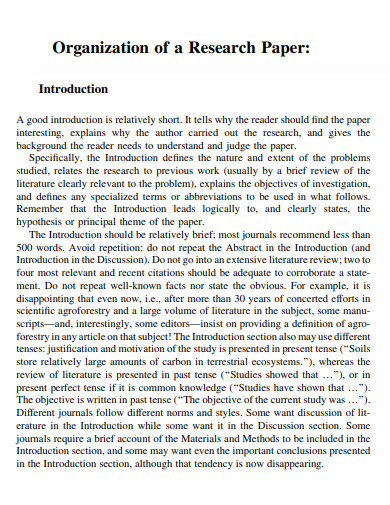
Size: 161 KB
10. Argument Research Paper Introduction

11. Introduction Section for Research Papers

12. Sample Introduction Research Papers

Size: 54 KB
13. Simple Introduction Research Papers

Size: 668 KB
14. Introduction Scientific Research Papers

Size: 417 KB
15. Basic Research Papers Introduction

16. Economics Research Papers Introduction

Size: 283 KB
17. Research Paper Proposal Introduction

Size: 184 KB
18. Literature Review Research Paper Introduction
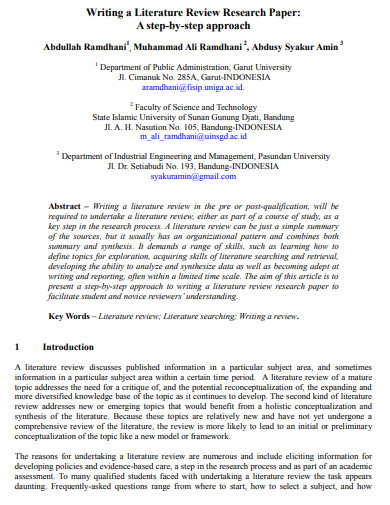
Size: 363 KB
19. General Research Paper Introduction

20. Standard Research Paper Introduction
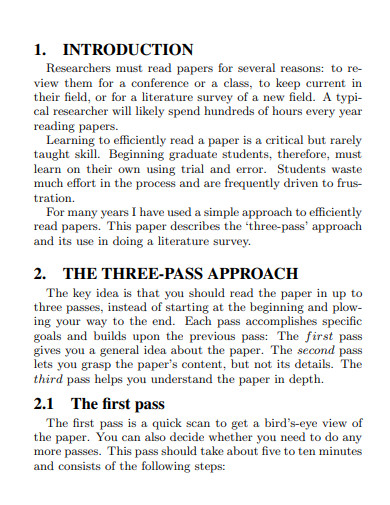
21. Steps for Research Paper Introduction
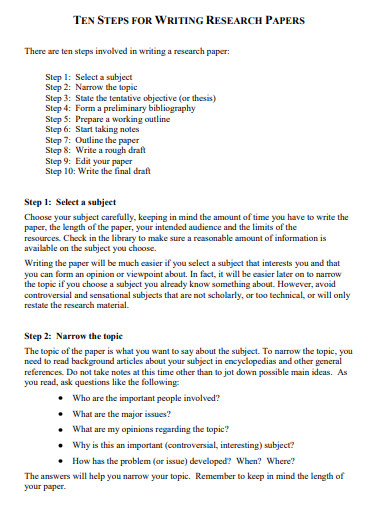
Size: 108 KB
22. Good Research Paper Introduction

Size: 160 KB
23. Research Paper Introduction Outline

Size: 24 KB
24. Printable Research Paper Introduction

Size: 11 MB
25. Formatting Research Paper Introduction
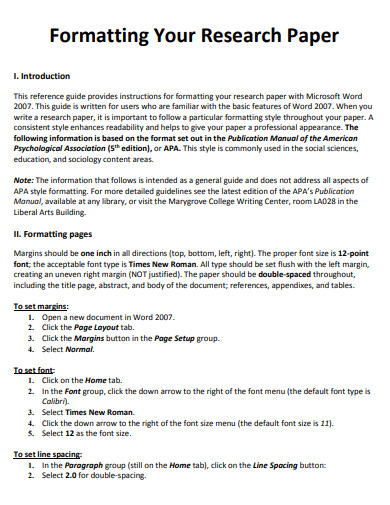
Size: 223 KB
26. Editable Research Paper Introduction

Size: 255 KB
27. Research Paper Introduction Layout

What is an Effective Research Paper Introduction
An effective research paper introduction is a concise and engaging opening section that entices readers to continue reading. It presents the research topic, outlines the objectives and purpose of the study, and highlights the relevance and significance of the research. A well-written introduction provides a clear and logical flow of information, guiding readers through the research problem, and establishing the groundwork for the subsequent sections of the paper.
How to Write an Effective Research Paper Introduction
Crafting an effective research paper introduction is crucial for capturing readers’ attention and setting the stage for your study. This guide will provide you with a step-by-step approach to master the art of writing an engaging and informative introduction. By following these guidelines, you can create a compelling opening that establishes the context, outlines objectives, and conveys the significance of your research.
Step 1: Understand the Research Paper Format:
Before diving into the introduction, familiarize yourself with the required research paper format . Depending on the discipline, you may need to follow specific guidelines such as APA format , MLA paper format , or others. Understanding the text structure and citation requirements is crucial for creating a cohesive and well-structured introduction.
Step 2: Define the Research Design:
In the introduction, briefly describe the research design employed in the study. Explain whether it is a qualitative, quantitative, or mixed methods approach. This information will help readers understand the type of data collection and analysis methods used to address the research problem.
Step 3: Craft a Research Outline:
Develop a research outline that acts as a roadmap for your study. This outline will help you organize your thoughts and ensure a logical flow of information in the introduction. Include the main sections and subsections that will be discussed in the paper, giving readers a preview of the paper’s structure.
What is the difference between APA and MLA format?
APA and MLA are two commonly used formatting styles for research papers. APA (American Psychological Association) format is typically used in the social sciences, while MLA (Modern Language Association) format is more common in the humanities. Both styles have specific guidelines for formatting citations, references, margins, fonts, and other elements. Check out our article on “ 14+ APA vs MLA Format Examples in PDF ” for more detailed comparisons.
Can you provide examples of research summary papers?
Certainly! We have a collection of research summary examples that can serve as a guide for summarizing research papers effectively. These examples demonstrate the essential components of a research summary and showcase different writing styles and approaches.
Where can I find research outline examples?
If you’re looking for research outline examples , we have a comprehensive article that provides a variety of sample outlines across different disciplines. These examples will help you structure your research paper effectively, ensuring a logical flow of ideas and information.
Writing an effective research paper introduction requires careful planning, clarity of thought, and attention to detail. By following the step-by-step guide provided here, you can create an engaging introduction that captivates readers and sets the stage for your research. Remember to adhere to the prescribed research paper format, such as APA or MLA, and utilize appropriate citations to support your claims. With a compelling introduction , your research paper will not only pique readers’ interest but also lay a solid foundation for the rest of your study.
Text prompt
- Instructive
- Professional
10 Examples of Public speaking
20 Examples of Gas lighting

IMAGES
VIDEO